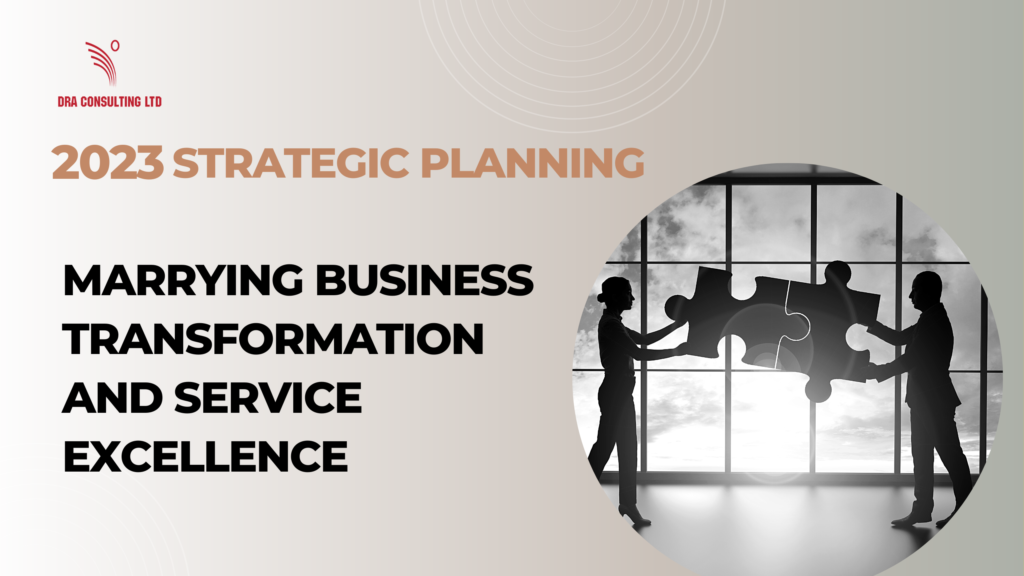We’re in the 2023 strategy planning season and leaders are fine tuning their approaches to embracing the new rhythm of business. Having come through the past two years of upheaval and disruption, I wonder though, about the depth of effort being dedicated to restructuring around new strategies for growth, amidst a continually fluid business landscape.
I would say that all (okay, maybe all is a stretch) businesses should be either going through or planning to go through self-engineered transformation at this point.
If I were pressed into identifying one of the key business drivers for the next normal, I would give “planning around continuous fluidity” the nod. In the future, businesses will need to normalize a different level of confidence and align their expectations around the reality of being able to predict the ebb, flow and temperament of the winds of change, with lowered certainty.
We’re in the 2023 strategy planning season and leaders are fine tuning their approaches to embracing the new rhythm of business.
It would be such a pity to have not learnt lessons from the immediate past that can help to chart the stacking of new approaches to leveraging business value. Jack Welch once said that businesses should, “Change before they have to.” May I say that I believe that now is an opportune time for leaders to consider the wisdom of this declaration?
In the new rhythm of business, Jack Welch’s bidding may well be a useful mantra to underpin the development of a more relevant prescription for businesses that understand the value of going beyond mere improvement, to deep level transformation.
Just in case you’re wondering about the difference between improvement and transformation, the gap is in the area of width, depth and sustainability of the shift. Basically, service improvement efforts go three feet deep and have specific target areas for upgrading, for example, the ubiquitous frontline employee training. Service transformation efforts on the other hand, are pervasive, total-company in scope and focus on deep, anatomical change. improvement is cosmetic, transformation is organic and emblematic.
A huge benefit of adopting a transformative approach to business re-engineering, would be the movement away from the rigidity of legacy architecture to be found in technology platforms, processes, service delivery and human resource management.
A huge benefit of adopting a transformative approach to business re-engineering, would be the movement away from the rigidity of legacy architecture to be found in technology platforms, processes, service delivery and human resource management. Onboarding this shift can now give way to enabling a new level of flexibility, the kind that forms the DNA of genuinely agile businesses.
What we have realized is that when legacy systems begin to approach their end-of-life stage, they become highly vulnerable to the weight of pressure to respond to burgeoning demands and need to give way to their more muscular, modern-day counterparts.
As a service transformation consultant, I’ve worked with businesses across the Caribbean on their transformation journeys. The businesses that have become industry-leading entities in the area of service excellence, have been those that paid attention to the sustainable elements of the change.
So, if your 2023 business growth strategy includes industry leadership in service excellence, let me suggest a couple of inputs.
Think of service transformation not as a “one-off” program, but as a long-haul, change intervention that transforms the business organically from a revenue-chaser, into a well-oiled, customer-centric machine.
Firstly, think of service transformation not as a “one-off” program, but as a long-haul, change intervention that transforms the business organically from a revenue-chaser, into a well-oiled, customer-centric machine. When done well, this shift begins to change a business at its core and sets the foundation for a superstructure that can now eliminate inconsistent service delivery, build deep customer intelligence and create a platform that promotes digital convenience, to name a few innovations.
Secondly, “unthink unsustainability.” Let me illustrate this point. Often when I meet with clients for the first time, I say to the leaders that it’s counter-productive to train frontline staff in effective customer relations in year one and to bring them back every year, for two to three years in succession for refresher training. That’s wasting money. It’s also a waste of money to only train frontline staff in the first place. That’s creating a lop-sided business, where only one employee cluster knows how to interact with customers. Goodness knows what will happen if the customer has to interact with an employee who would not have benefitted from the training.
Think sustainability. Introduce a total-company change intervention that marries business transformation with the normalization of service excellence.
Instead, think sustainability. Introduce a total-company change intervention that marries business transformation with the normalization of service excellence. This means redesigning the business to provide such immense customer value, that customer happiness and ultimately, business growth, last for a while. In other words, these benefits become sustainable outcomes.
The business that marries transformation with service excellence is the real show pony and the best outcome of this marriage happens when the business keeps its customers constantly on the edge of their imagination.
Now, that’s true differentiation.

